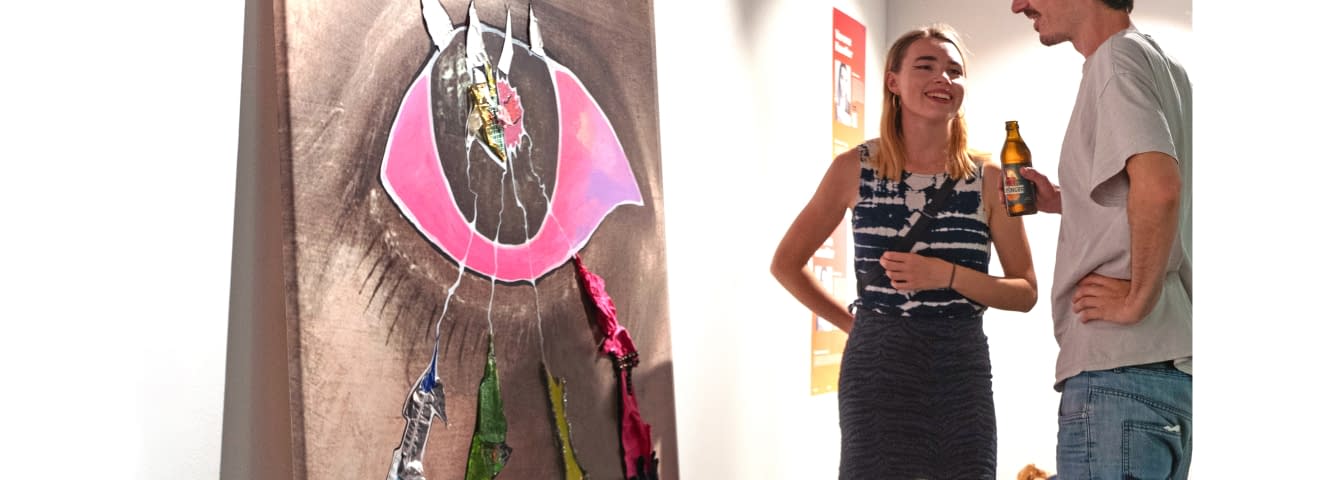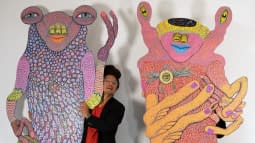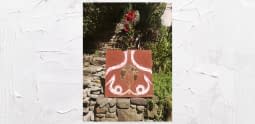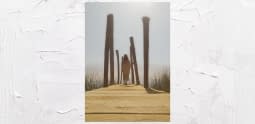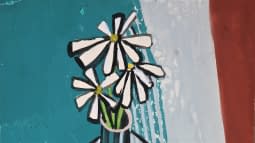The Encounter with Art: Images of Humanity, of Culture and Identity - A Very Personal View of Verena Kandler's Art
Sometimes I get the feeling that Verena's paintings divide people: Some wish for the melancholic style of her early days to return, while others embrace the expressiveness of the last few years and see it as a consolidation of her expressive power. I personally believe that it is not so much the particular style as the images themselves that address very personal facets of the viewer's psyche. Verena's art gets under your skin, is described by some as eerie or very bizarre and, despite bright colours and sometimes amusing motifs, sometimes awakens a sense of unease that is not so easy to describe. Her paintings seem to hold or evoke a power that rises up from the viewer's own subconscious and unconscious. In my opinion, this explains why many people with whom I have spoken to at exhibitions have such different preferences among her works. Of course, I also have my very own favourites among her works. I would now like to let three of them from the year 2022 have their effect on me as a person.
First, there is the small-scaled «Ghost Material» (2022, original: «Geistermaterial»), which was on view at several brief exhibitions in 2022, but may have been somewhat overlooked in light of her otherwise large-scaled paintings.
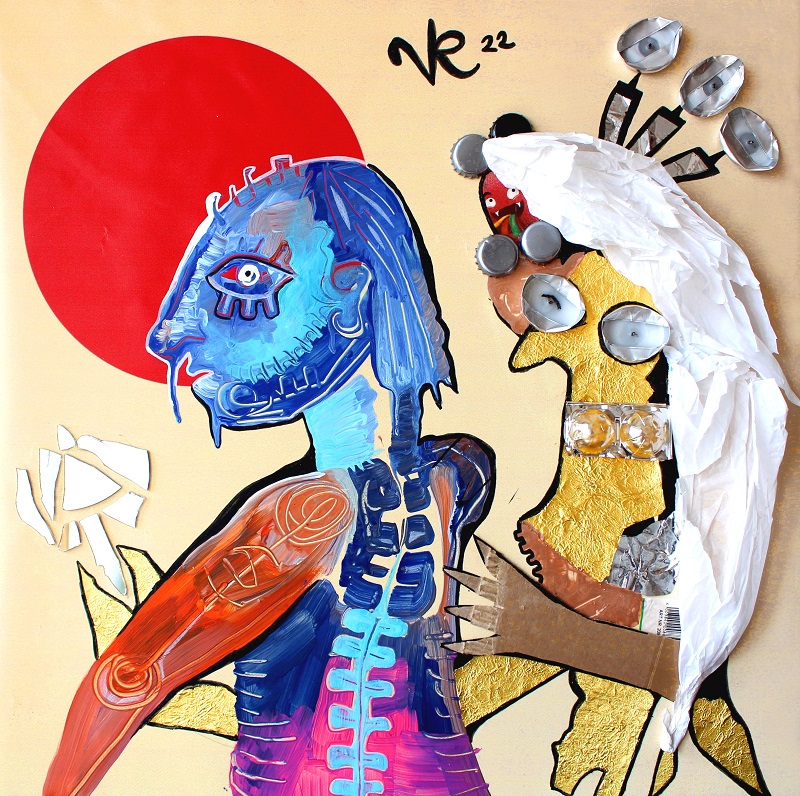
Like many of her more recent works, a piece of PVC tarpaulin was chosen as the basis and the painting was collaged with various found objects. In this case, however, the choice of the base seems particularly well done to me. The orange-red circular area on the yellowish matte background awakens associations of a primordial sun in me and, together with the blue, white and gold tones, transfers me to an ancient Egyptian scenery.
In an exhibition text, Verena describes Hauntology as the source of inspiration for this work. This is a research field in the humanities, which refers to recurring elements of cultural history and attests a ghostly survival to them. The choice of colours, the background and also the thematic association point out the ancient oriental roots of our culture to me, which affect all our spheres of life, from the «Amen» to the alphabet.
The blue figure is held up to a broken mirror by the ghost on his back and is presented with his own fragmented cultural history. What particularly excites me about this is the playful and witty way in which the ghost is designed. The half-closed eyes made of tea candles appear as if from a comic book and give the ghost figure something insidious or mischievous. This reminds me of a trickster who whispers knowledge and truth into the blue figure, but could just as well be deceiving him. His blue counterpart's face seems to melt in the process and, accordingly, his own construction of cultural identity. The fact that an engagement with culture often entails its pitfalls and hasty conclusions is thus expressed just as well as the fact that such an engagement can also bring prejudices and fossilized moral concepts to melt away. The «Ghost Material» is thus a double-edged sword, an abstract and contrasting representation of perception and engagement with cultural themes.
A keyword that sometimes crosses my mind when I look at Verena's art is animism. This describes an animated environment: plants, animals and objects are said to have an inherent spirit and thus, to a certain extent, an agent. A great example of this for me seems to be Verena Kandler's «Yellow House» (2022, original: «Gelbes Haus»), which is currently hanging in her living room as one of the few of her own paintings.
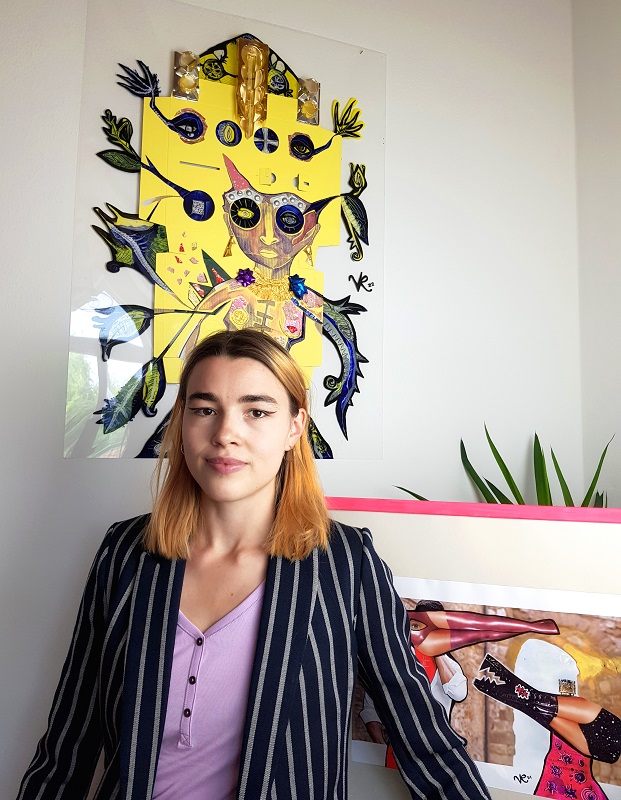
When viewed in the warm afternoon light, the transparent plexiglass screen that serves as the background is illuminated and the colours shine through just like a cathedral window. Whereas at night, the painting is artificially lit from below and reshapes its contours in the play of shadows.
At the centre of the work stands a figure with tendrils and leaves as limbs, a kind of a spirit of nature, whose upper body and head are applied as a coloured pencil drawing on a yellow cardboard, which in turn is stuck to the plexiglass. On the upper edge of the image arises a lace form, reminiscent of a Gothic-style-stained glass window. But where the church is the house of God, this yellow house is dedicated to our transformed, human nature. Depictions of eyes, knotholes, leaves and branches find harmony with the artificiality of the processed objects and a QR code that leads to Verena's website. Nature often takes on a sanctified contrasting representation in art and culture as opposed to the sins of humanity, thus answering a clichéd call for a return to nature that can at best be considered «sanctimonious». It is a fact that all human representations of nature, if not arbitrary, artificial or imposed, are in any case coloured by our own perception. «Yellow House» serves a more honest approach: the concept of nature is indeed personified and animated, but on the other hand, human products also experience such an approach and become animated. So does the picture itself, when it is illuminated by changing light conditions and thus develops a life of its own. Not only an ensouled nature is the focus, but also an ensouled humanity. Accordingly, the philosophical opposition of nature and culture concepts is resolved in a harmonious play of light in which packaging materials are not afraid to show their golden beauty or to be interwoven in a nature spirit.
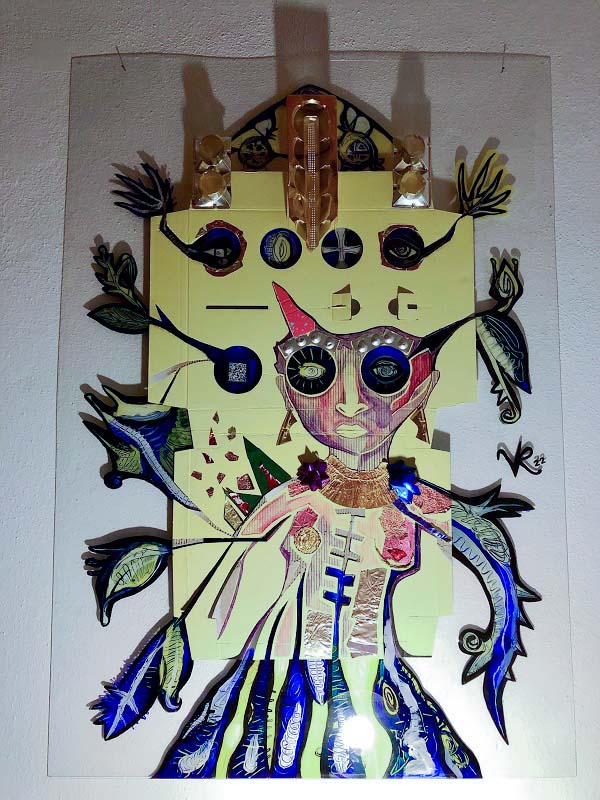
If you took the subway to Munich's LMU University in the summer of 2022 or used this stop to enjoy the beautiful weather in the English Garden, you might have been lucky enough to observe Verena Kandler while at work. Because Verena has used the exhibition period of the subway gallery of Max-Vorstadt in Munich to bring her creative process to the public. Many of the materials came from the site itself and the PVC tarpaulins she used as a base were discarded banners from the Alte Pinakothek. In the process, «Standpoint (TECH NO BODIES)» (2022, original: «Standpunkt (TECH NO BODIES») emerged as one of two large-scale paintings.
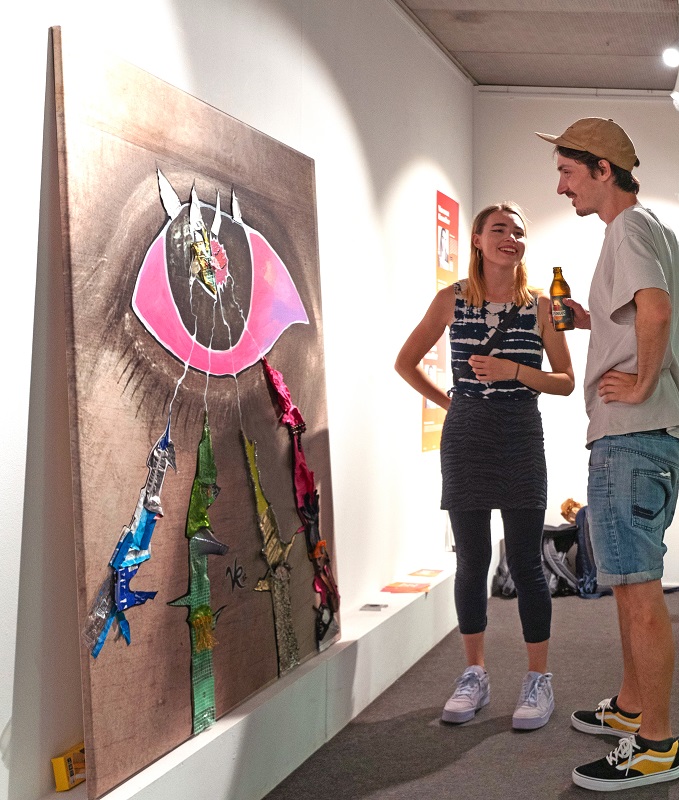
If you look at the work only on Verena's website, you will hardly notice with how much attention to detail she has woven a tremendous amount of found objects from the Max-Vorstadt into the 160x130 cm large image. Unlike the previous paintings I described above, the PVC background in «Standpoint (TECH NO BODIES)» already has a motif: the enlargement of a shoe from a baroque painting that can be viewed in the Alte Pinakothek. However, I'm less interested in the original work than in what Verena has made out of this detail.
Just as in «Yellow House, the shoe seems to lead a life of its own and looks at the viewer dangerously from piercing eyes similar to a crocodile. The partly bizarre found objects cover the shoe like scales and provide it with an armour of unwanted humanity. In a text accompanying this image, Verena emphasizes a neo-archaeological approach that views the objects discarded as «waste» as archaeological finds of the very recent past and valorises them. Now, one could perceive this image as a social criticism of our consumer behaviour and our throwaway society. But I also see in it the traces of our culture, which in turn fall off us like scales, whether we like them or not. After all, doesn't every found object that a future civilization may find from our time as a mass production society become like one of our footprints and thus makes a statement about our identities?
%20(2022)_800pix.jpg)
When people attribute something sinister to Verena's images, I can understand it best in the case of «Standpoint (TECH NO BODIES)». Because the shoe looks into my soul with an enormous force and throws me back to the embarrassing corporeality with which my life is connected. All the objects that I use every day in order to not be an animal, things that I push away from me, have acquired an agent in this image and seem to be ready to act - to recoil? Yes, I think it is the fear of an ensouled revenge of the lifeless and animated masses that bothers us and causes a feeling of guilt that we try too hard to suppress in everyday life. And surely everything is nice and clean and hygienic as long as one is not confronted with one's own garbage. But with «Standpoint (TECH NO BODIES)», Verena has presented the Max suburb of Munich with a very uncomfortable incarnation of her own humanity for a month and, in my opinion, achieved a stroke of genius.
Now this picture would not be called the way it is called, if it would not have something to do with the standpoint. And in this I notice again how personally coloured my observations are to the pictures. Because just as with the Mona Lisa, it depends on the point of view or the angle with which one looks at the picture and immediately the view of the all-too-lively shoe changes. Verena herself once told me that she classifies the look of the figure as melancholic and indeed, from the right angle I also perceive this mood. But it is precisely this issue that attracts me to art (and to Verena Kandlers works in particular): The play of associations and triggers, of feelings that a work can evoke and how different these can be among the viewers.
Note: Would you also like to share your experiences and impressions of encountering art with us and the art24 community? Then feel free to contact us by email at hello@art24.world. The introductory text to the section «The Encounter with Art. An Encounter with Ourselves?» could also serve as additional inspiration.
Glossary:
Agens: From the Latin «agere», «meaning «driving», «acting». This means an «active, doing, acting being or principle» (according to DWDS).
Image credits:
Image 1: Ghostmaterial (original «Geistermaterial»), Verena Kandler, 2022, acrylic paint, plastic packaging and paper on stretched PVC banner, 55 x 55 x 3 cm, photo: Verena Kandler.
Image 2: Verena Kandler in front of her work «Yellow House» (2022, original «Gelbes Haus»), photo: Verena Kandler.
Image 3: Yellow House (original «Gelbes Haus»), Verena Kandler, 2022, reverse glass painting + collage (acrylic paint, plastic packaging, paper cardboard and fabric on Plexiglas), 100 x 70 cm, photo: Verena Kandler.
Image 4: Verena Kandler and Max Kretschmann in front of the work «Spectrum (Eye storm)» (2022, original: «Spektrum (Blickgewitter»), photo: Georg Fleischer.
Image 5: Standpoint (TECH NO BODIES) (original «Standpunkt (TECH NO BODIES») , Verena Kandler, 2022, Mixed Media, 160 x 130 x 3 cm, photo: Verena Kandler.
Cover image: Verena Kandler and Max Kretschmann in front of the work «Spektrum (Blickgewitter)» (2022, original: «Spektrum (Blickgewitter»), photo: Georg Fleischer.
